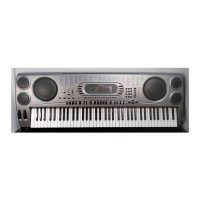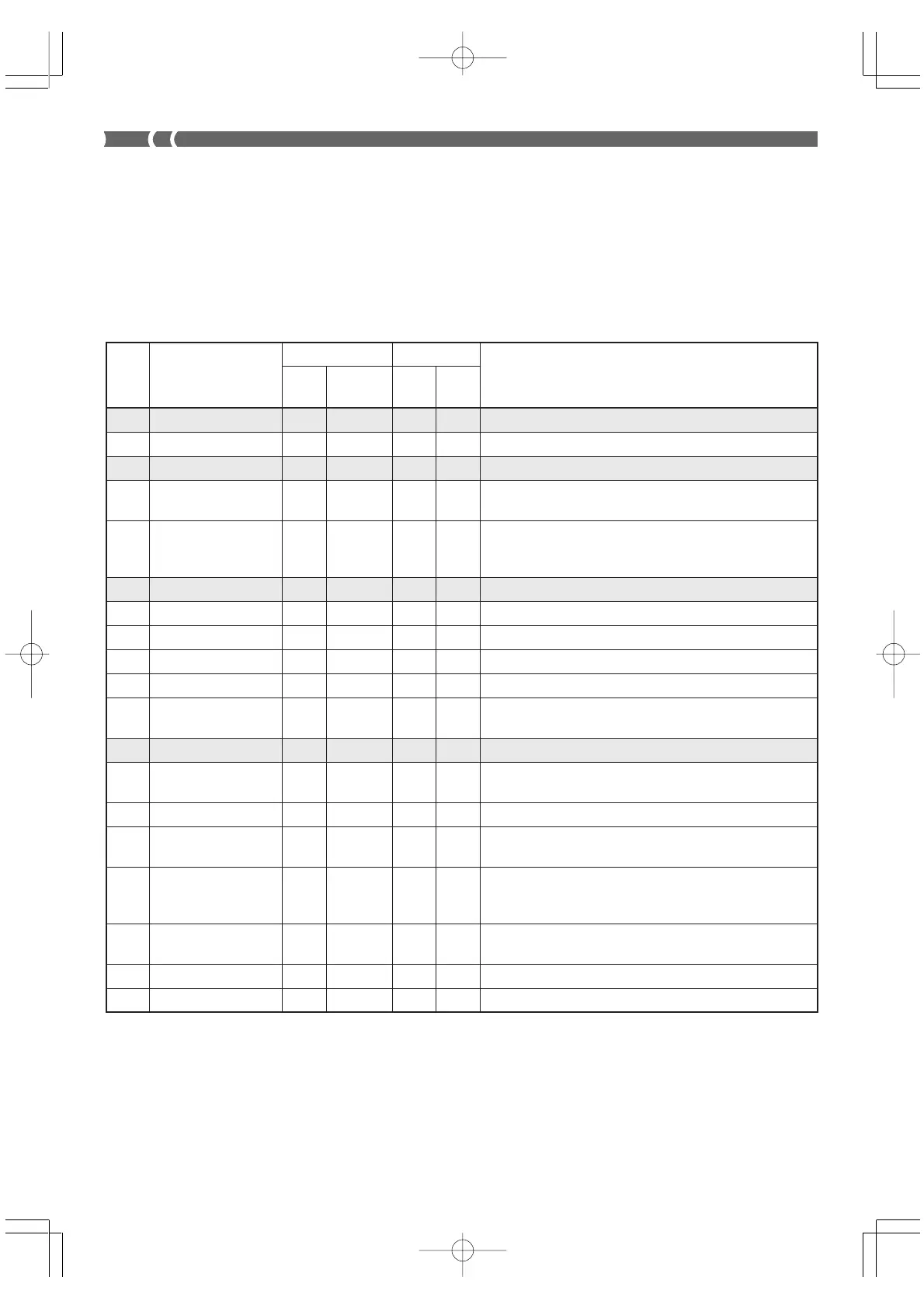A-8
733A-E-088A
Chord Conversion Table
• The applicable chord conversion table depends on the particular combination of elements and parts. The symbol 쑗 in the table
below indicates that a chord table is applicable, while ҂ indicates that a chord table is not applicable.
• The explanations in the “Description” column all assume the following conditions for the recorded accompaniment pattern.
Root: C
Major chords, unless specified otherwise.
• The explanations in the “Description” column describe how the recorded accompaniment (12 notes from C to B) are modified
when an accompaniment chord is specified.
• The shaded rows are the default numbers for each element and part.
Intro,
Ending
Bass
Chord 1
Chord 2
Chord 3
Normal, Variation,
Normal/Fill-in,
Variation/Fill-in
No. Names
Element Names Part Names
Description
00 Basic Bass ҂ 쑗쑗҂ Normally used for the bass part.
01 7th Bass ҂ 쑗쑗҂ Used for a bass part recorded by a 7th chord.
02 Basic Chord ҂ 쑗 ҂ 쑗 Normally used for the chord part.
03 Basic Chord2
҂ 쑗 ҂ 쑗
A variation of Number 02 with different conversion when Gm7/C
is specified during accompaniment.
Specifying a 7th chord during play transforms the 5th note of the
04 Variation Chord1 ҂ 쑗 ҂ 쑗 scale to the 7th note of the scale. In the case of C7, for example, G
becomes B
.
05 Variation Chord2 ҂ 쑗 ҂ 쑗 Variation of number 04 (Variation Chord 1)
06 7th Chord ҂ 쑗 ҂ 쑗 Used for the chord part when a 7th chord is recorded.
07 Minor Chord ҂ 쑗 ҂ 쑗 Used for the chord part when a minor chord is recorded.
08 Major Phrase ҂ 쑗 ҂ 쑗 Used for the chord part when a phrase is recorded in a major scale.
09 Minor Bass Phrase ҂ 쑗쑗҂ Used for the bass part when a phrase is recorded in a minor scale.
10 Penta Phrase
҂ 쑗 ҂ 쑗
Used for the chord part when a phrase is recorded in a penta scale
(CDEGA).
11 Natural Minor 쑗 ҂ 쑗쑗Transforms to natural minor when a minor chord is played.
12 Melodic Minor
쑗 ҂ 쑗쑗
Transforms to melodic minor (ascending) when a minor chord is
played.
13 Harmonic Minor 쑗 ҂ 쑗쑗Transforms to harmonic minor when a minor chord is played.
14 No Change
쑗 ҂ 쑗쑗
Original chord as recorded in response to chord that is played,
without transformation to minor or major.
Variation of number 12 (Melodic Minor). Playing a major chord
15 Melodic Minor 2
쑗 ҂ 쑗쑗causes recorded B
notes to be transformed to B, while playing a
minor chord plays B
as it is.
16 Dorian Scale
쑗 ҂ 쑗쑗
Play of a minor chord is transformed to the Dorian scale. The Dorian
scale lowers the major scale E and B one semitone.
17 Minor ➛ Major 쑗 ҂ 쑗쑗Used for intro and ending recorded with minor chords.
18 Tension chord ҂ 쑗 ҂ 쑗 Used for the tension chord part used in jazz, bossa nova, etc.
WK-1800/1600(E)-Appendix 03.7.31, 5:22 PMPage 8 Adobe PageMaker 6.5J/PPC

